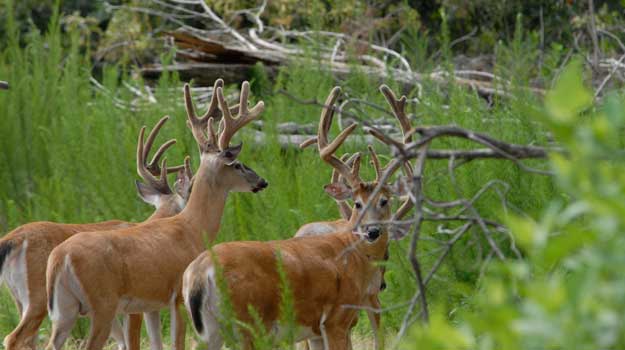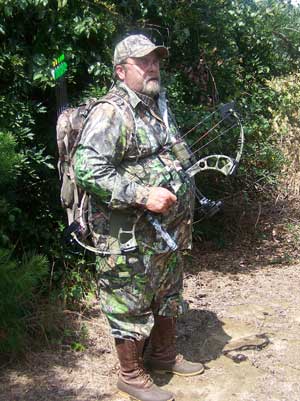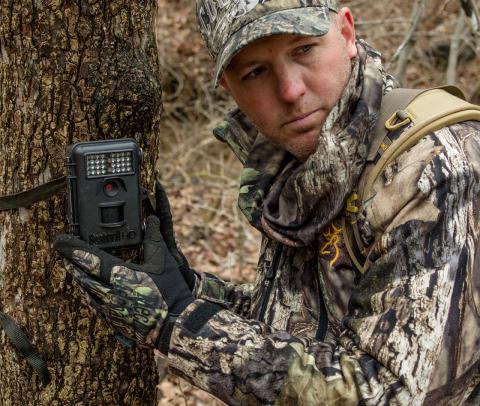
I have three or four different Mossy Oak camo patterns that I wear throughout the season. I wear Mossy Oak Bottomland in the early season. If the place I'm hunting fits better with Mossy Oak Obsession, I wear that pattern, but Mossy Oak Break-Up Country usually works best for me almost any place I'm hunting.
I'm a switch hitter. I bowhunt as well as rifle hunt. We tend to take our biggest bucks off both properties during muzzleloader season, which arrives at the end of October and continues through the first of November. The first week or two of rifle season generally starts the second Saturday of November. Like many other states, at the first of bow season, I do more scouting than I actually hunt. Also during the early part of the season, the bucks’ antlers are still in velvet. So, I’ll often wait until the weather cools down some. Then, if I take a deer with my bow, and I have to leave him overnight, the meat won’t spoil.
 One question I'm often asked is, “What do you do to prevent odor and how do you prevent insects during the early season?” I use the odor-elimination products. I wash my clothes in that laundry detergent, and I use odor-eliminating sprays during the season.
One question I'm often asked is, “What do you do to prevent odor and how do you prevent insects during the early season?” I use the odor-elimination products. I wash my clothes in that laundry detergent, and I use odor-eliminating sprays during the season.
During the first of September, the bucks are still in their bachelor groups, browsing and feeding on agriculture. So, when we see the bucks, we look for places where we can put up tree stands to take the deer as they're going to food. Now in North Carolina, we don’t have those monster bucks like you find in Missouri, Kansas, Ohio and the bucks like Mark and Terry Drury take. On both clubs, we consider a deer that will score 140 to 150 inches a trophy buck. An exceptional buck will score 160 inches. We see those bucks that will score 150 inches regularly, but we only harvest one about every two to three years off each property. Just because we see those deer doesn’t necessarily mean that we harvest those deer or have the opportunity to harvest those deer.
At the first of the season in September, hunting deer feeding on agriculture is usually your best bet. The exception to that rule is food plots. Deer will work a food plot, just like they will an agriculture field. That’s the reason we plant Mossy Oak BioLogic’s Full Draw for the early-season hunts. Then we can determine which bucks most often feed on which food plots.
The property is really steep in the cutover areas that we hunt, and a little creek is in just about every one of the bottoms, dropping off the hills. That’s where the bucks will hold in hot weather. So, we rarely if ever go down in those bottoms. We let those places become sanctuaries for our older-age-class bucks. Late in the afternoon when the weather cools down, the bucks will get up and come up the hills to feed in our food plots just before dark. The cutovers also have a lot of browse in the early season. So, the deer don’t have to depend just on our food plots.
During bow season, you may see from 6-10 deer when you're on a stand on either one of the farms that we hunt. Most of the time 2/3 of the deer you see will be bucks. That’s the reason we have the two does and one buck limit on both properties.
To learn more about deer hunting, check out John E. Phillips’ eBook and print book, “Bowhunting Deer: Mossy Oak Pros Know Bucks and Bows.” Go to www.amazon.com/Bowhunting-Deer-Mossy-Pros-Bucks-ebook/dp/B013F0T58O.
Part 1: How to Get Ready for Bow Season
Part 3: Bucks in Velvet and Stand Placement



























